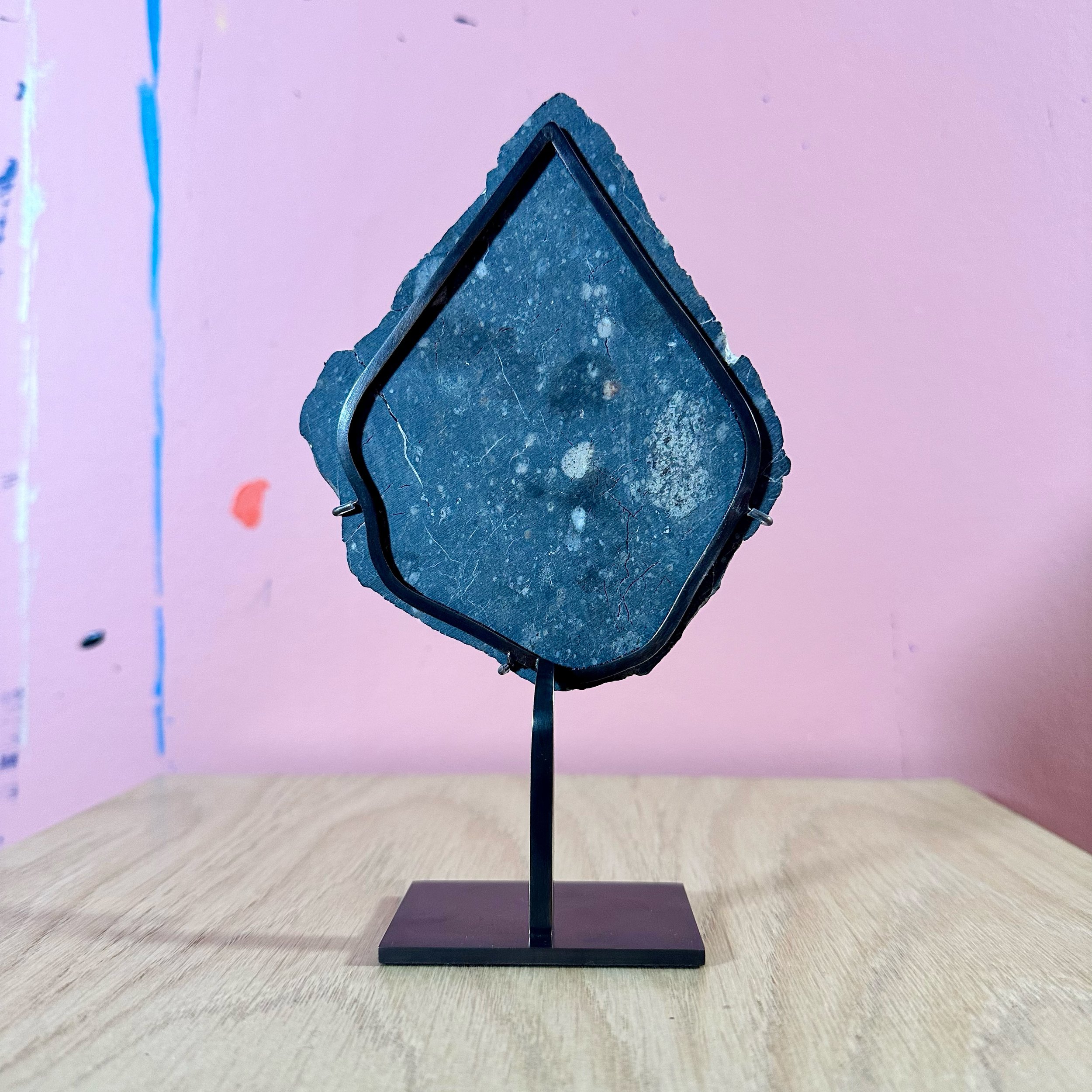Large Lunar Slice: NWA12368
Discovered in 2017 in the Moroccan Sahara, NWA12368 was a rare lunar meteorite weighing an impressive 1.86kg. Due to its remarkable size, slices like that seen below were created in order to witness the stunning interior better. The slice seen below was then polished and a bespoke display stand was created.
Details:
NWA12368
Lunar Feldspathic breccia
Approximately 3.8 billion years old
13 x 10.7 x 0.3 cm (18 x 10.7 x 4.5 cm with stand)
North West Africa
Bespoke stand included
£4,000
NWA12368 consists primarily of fragmental pyroxene, olivine, feldspathic and mafic clasts, and shock melt and survived a high shock level when crashing into the Earth’s crust. Having survived the entry to Earth without burning up, this meteorite also remained as one complete stone with no fusion crust. When examined by scientists, it was revealed the meteorite contained fragmental breccia with scattered white feldspathic and mafic clasts set in a dark grey groundmass.
This slice measures an impressive 13 x 0.7 x 0.3 cm and weighs 55g. Despite being discovered in 2018, the rock within the meteorite itself was actually formed around 3.8 billion years ago.
Lunar meteorites (lunaites) unique circumstances for entry into the atmosphere and their feldspathic composition, make them one of the rarest substances on Earth. Only 0.7% of all meteorites found on Earth contain lunar material, with a total mass of approximately 1026 kg as of December 2022. Due to elemental testing, scientists have found lunar meteorites to be the only group of meteorites for which the source body can be identified unequivocally.
The first lunar meteorite was discovered in Antarctica in November 1979 called ‘Yamato 791197’ however its lunar origin was not confirmed until later. Most lunar meteorites have been found in the Sahara Desert of Northern Africa and in the desert of Oman, almost exclusively by local people and experienced meteorite hunters.
How are Lunar Meteorites formed?
Due to the Moon having no atmosphere, asteroid and comet impacts on its surface are common. Impacts can cause fragments of ‘lunar rocks’ to be launched off the Moon’s surface at >2.4 km/s (lunar escape velocity) and start a journey to Earth. Before landing on the planet’s surface, the material has to survive the intense heat of impact.
The rarity of lunar material is due to the frequency of impacts. There are approximately 5 impacts per million years large enough to eject lunar meteorites, however, these impacts can cause craters as large as 450 metres in diameter (around a quarter of a mile).
Auction results
First coming to auction in 1997, lunaites often surpass estimates all over the world. Notably, in the 2021 ‘Deep Impact’ Christie’s auction, Tisserlitine 001 sold for $525,000 smashing its $250,000-300,000 estimate. In the same auction, lunar sphere NWA 12691 sold for 20x its estimate at $500,000. In recent auction results, Sotheby’s Natural History Auction saw an NWA lunar meteorite sell for $4,826.
Tisserlitine 001
Discover rare meteorites, minerals and fossils by visiting Extraordinary Object’s Natural History page. To find out more details about our Large Lunar Slice or any other Natural History works please get in touch




